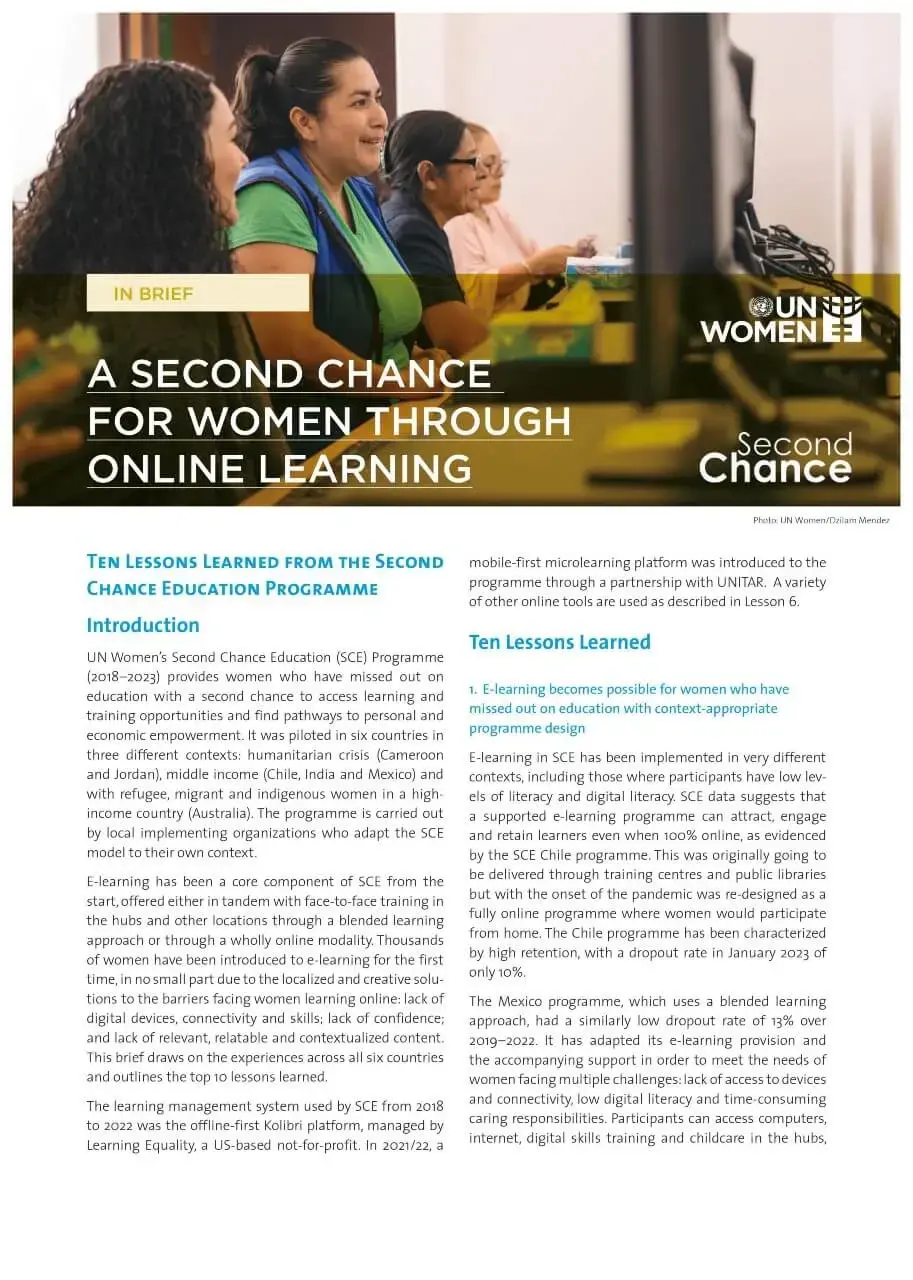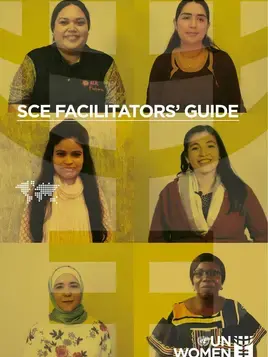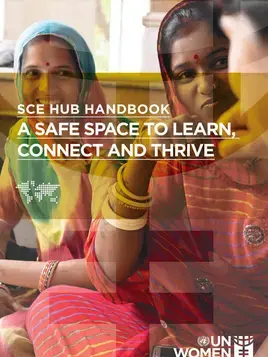
A second chance for women through online learning: Ten lessons learned from the Second Chance Education Programme
UN Women’s Second Chance Education (SCE) Programme provides women who have missed out on education with a second chance to access learning and training opportunities and find pathways to personal and economic empowerment. E-learning has been a core component of SCE from the start, offered either in tandem with face-to-face training in the hubs and other locations through a blended learning approach, or through a wholly online modality. E-learning in SCE has been implemented in different contexts, including those where participants have low levels of literacy and digital literacy.
The challenges of the digital gender divide and of ensuring that connectivity and hardware are available for all should not be underestimated. But online learning, when informed by the 10 lessons outlined in this publication, offers a unique opportunity to reach women who have always been at greatest risk of exclusion. The blended learning approach offered by many SCE programmes shows how e-learning can be adapted to meet the needs of women facing multiple challenges: a lack of access to devices and connectivity, low digital literacy, lack of digital confidence, and time-consuming caring responsibilities.
E-learning gives greater flexibility to women to study at their own pace, at a time and location of their choosing, with access to a safe virtual space for instructional support and social interaction and the option of asynchronous interaction by text.
SCE’s experience suggests that e-learning programmes, whether blended or fully online, can be designed to take into account the barriers that women face in participating online.


